Review and photos by OkapiBoy
High in the mountain woodlands of Ethiopia lives one of the most distinctive and endangered of Africa’s large antelope. Here and nowhere else lives the mountain nyala (Tragelaphus buxtoni), a large and shy antelope that was first described in 1910. It is monotypic with no subspecies. While other members of the Spiral-horned antelopes have attained some sort of fame, the mountain nyala remains pretty obscure.
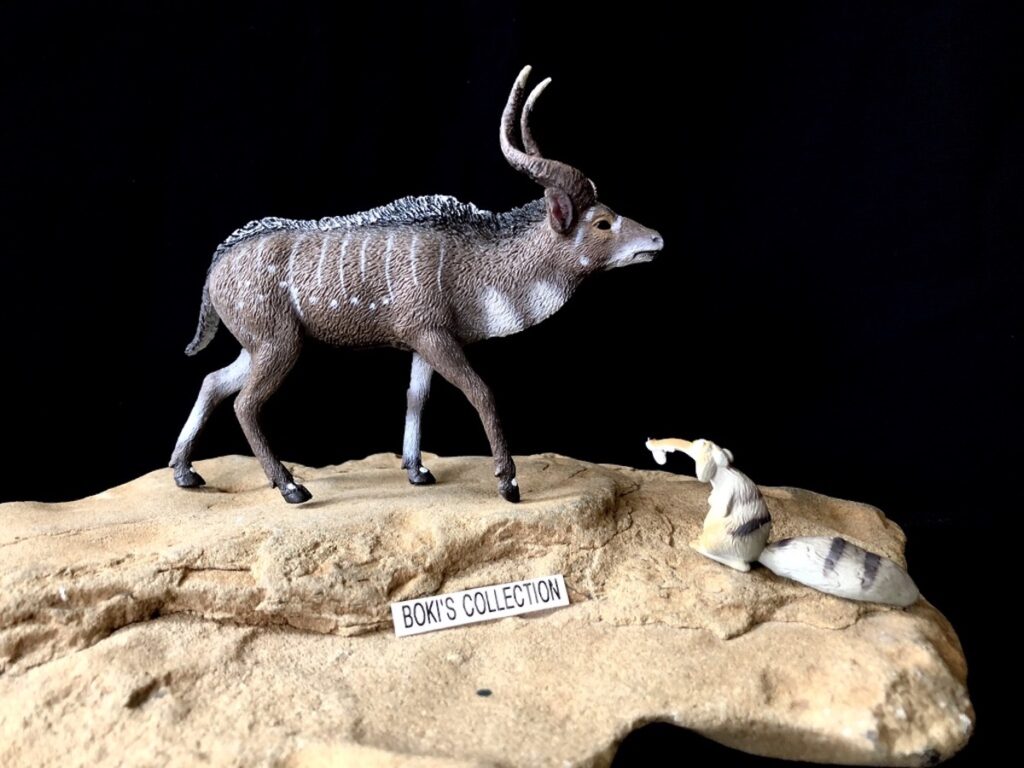
Today, we will take a look at CollectA’s figure of this elusive antelope. While various species of antelopes has been a constant staple in the toy figure market, these are usually are the most common or easily recognized species, so leave it to CollectA to add another obscure species to its growing herd of amazing antelopes.
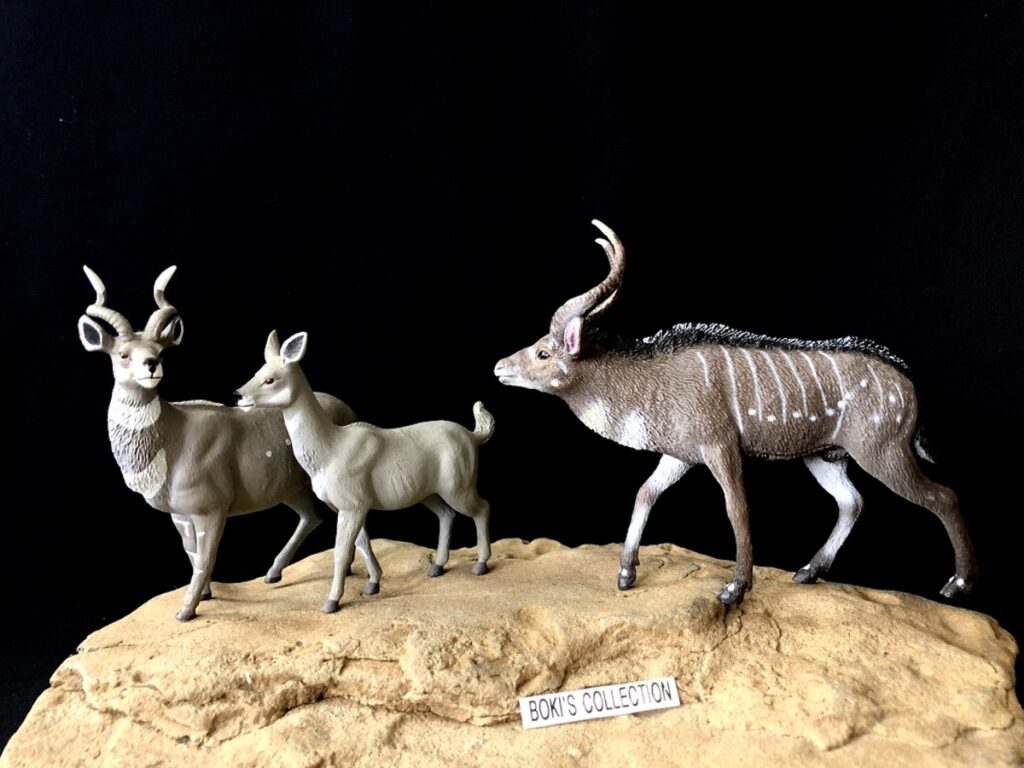
Another different antelope, the nyala, can easily be confused with this species due to their name and somewhat similarity in physical appearance. It is more common and widespread than the mountain nyala.
The mountain nyala is larger and taller than the nyala and also much darker. The nyala males also have a distinctive tuft of long hair on its throat. The horns may look similar, but the nountain nyala is much thicker.

Mountain nyala are large, sexually dimorphic antelopes with only the males possessing large horns, females and young males don’t have horns. That said, it is clear that this figure is a male in its prime with its large horn and dark coloration.

CollectA is famed for their exquisitely sculpted extant antelope, and this figure is no exception. He figure measures 4.5″ inches long and 3″ inches tall. It is posed in mid-stride, calmly walking and yet alert with its head pushed forward.
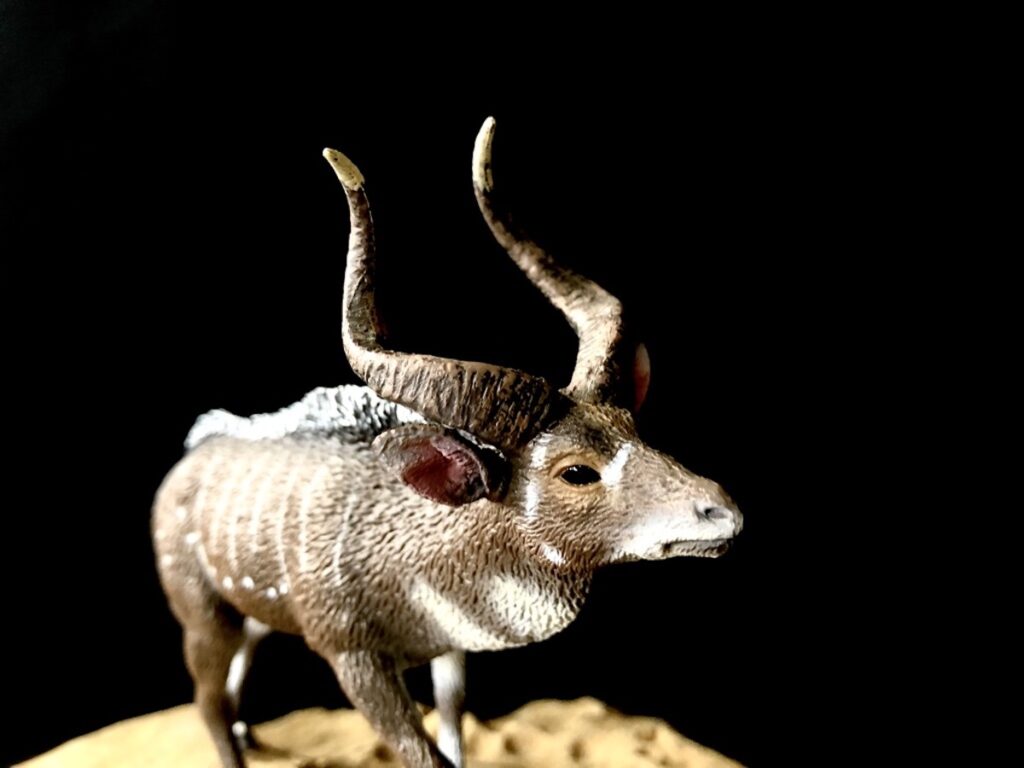
The head is beautifully sculpted with lots of textures and details such as hair and musculature. The face has the distinctive stripes in the front between the eyes, the muzzle, side of the head all the way down to the checks. On the large ears, there is a pink color to indicate skin, while the tips are also colored white. The eyes are big and colored black with a light brown patch around it.
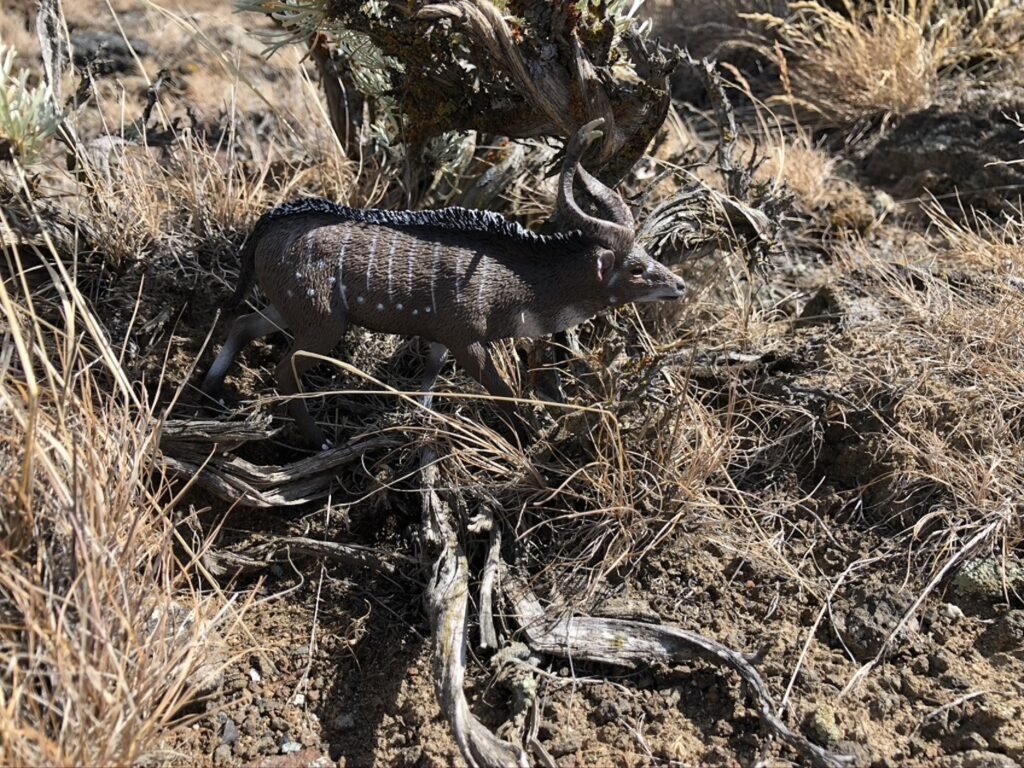
Mountain myala’s horns have a somewhat cream color and grow in a spiral pattern with one or two spirals. CollectA captured this perfectly on their figure. The horns are thick and spiral upwards in an impressive way. There are plenty of details on the horns as well, and the paint job is very well done. The tips are fairly sharp, although the very tips are slightly rounded for safety.
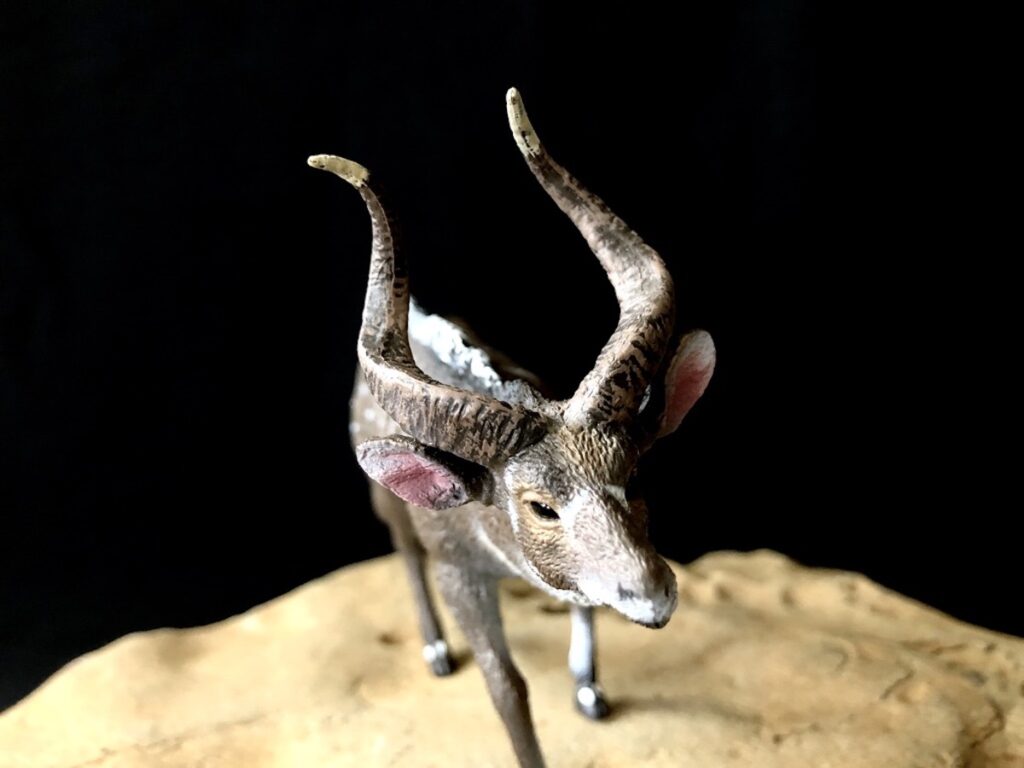
In many ways, the mountain nyala sort of resembles the kudu, a more common and lower elevation inhabitant. The male mountain nyala’s overall body coat color is a gray-brown, while females are lighter reddish brown. In fully mature males, the coat color is usually charcoal gray. There are also up to five poorly defined stripes running down from the back to the underside. There are also rows of six to ten white spots that runs horizontally around the stomach region and white markings on the legs as well as a V shaped on the neck/throat.

The figure matches the body color pretty well with a mixture of dark brown, gray, and some lighter brown highlights. CollectA’s figure unfortunately has nine stripes instead of the five commonly seen and are much too pronounced, a minor mistake, but it can easily be attributed to individual variation or inconsistency in quality control. The spots are about right in both location and number (10 on my figure).

Another distinctive feature of the mountain nyala is the short thick dark crest on the middle of the back that runs from the neck all the way down the back, both male and female has them, but the females is much shorter than that of the males. The crest on the figure is well defined and is colored black with white highlights which brings out the details of individual strands.
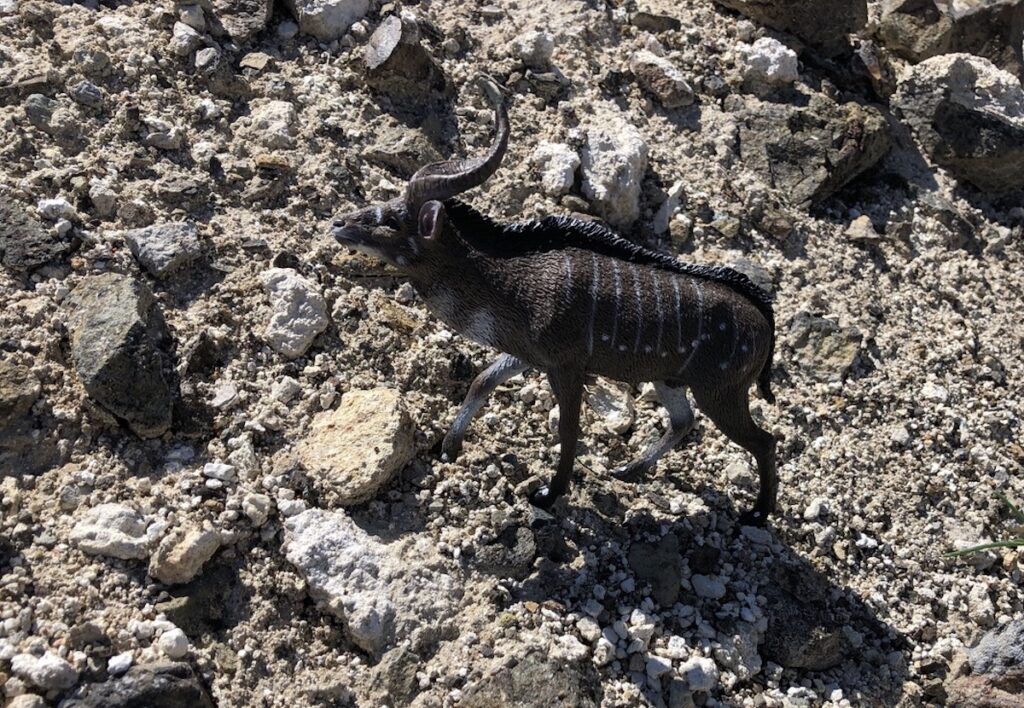
The environment that the mountain nyala inhabit can be inhospitable. You won’t see vast herds of grazer here due to the harsh conditions. Although they sometimes congregate and form small herds, mountain nyalas are not herding animals and males don’t really defend territories.

The scarcity of prey and the high altitude have prevented many of the iconic plains and woodland predators, such as lions, leopards, cheetahs, and wild dogs, from following. The largest predator in the area, the enigmatic Ethiopian wolf, another endemic species to this region, is not a threat as it feeds on smaller animals.Some of the familiar lowland animals such as the warthog and hyaenas do venture up and can sometimes be spotted.

With such a restricted range, the continued march of humans has encroached upon this unique and fragile environment. Humans and their livestock compete for both food and habitat and are pushing the mountain nyala into much higher elevation.

Today, these forces have pushed the mountain nyala to the brink and they are now classified as an endangered species. Their restricted range and small population makes them vulnerable to extinction. They make their last stronghold in the Bale Mountains National Park.
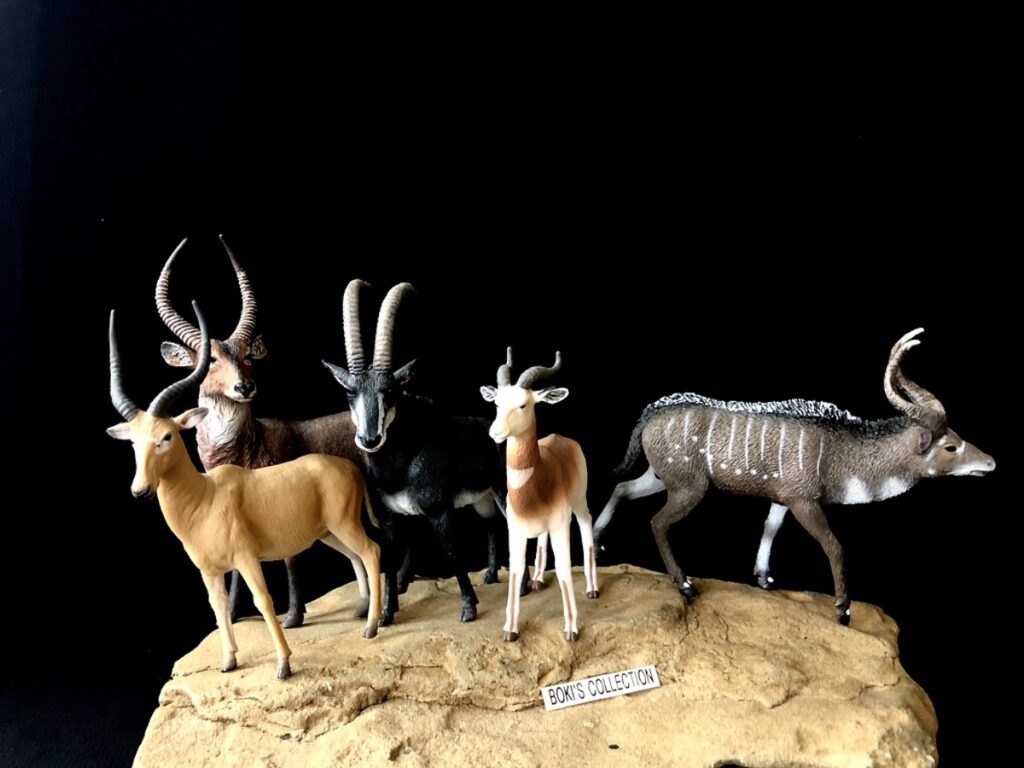
They are not common in zoos so any hopes of saving them must be done in situ. Hopefully conservation work that are being done today would be enough and successful to ensure that future generation will have an opportunity to see this majestic antelope in the wild.
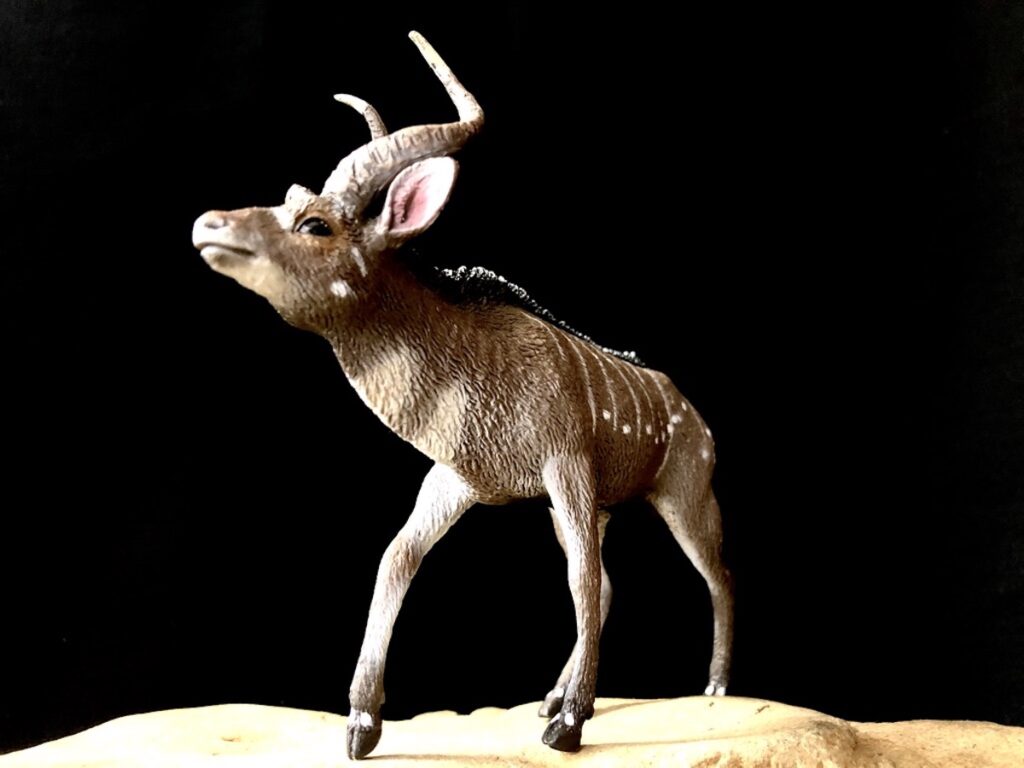
This figure is definitely worth adding to any collection. Its beautifully done and full of details. It is a nice addition to any collection that focuses on African wildlife. If you’re a big fan of antelopes like me, this is a must have. Seen together with the rest of CollectA’s amazing antelope herd, it truly is a standout and surely one of my favorites.
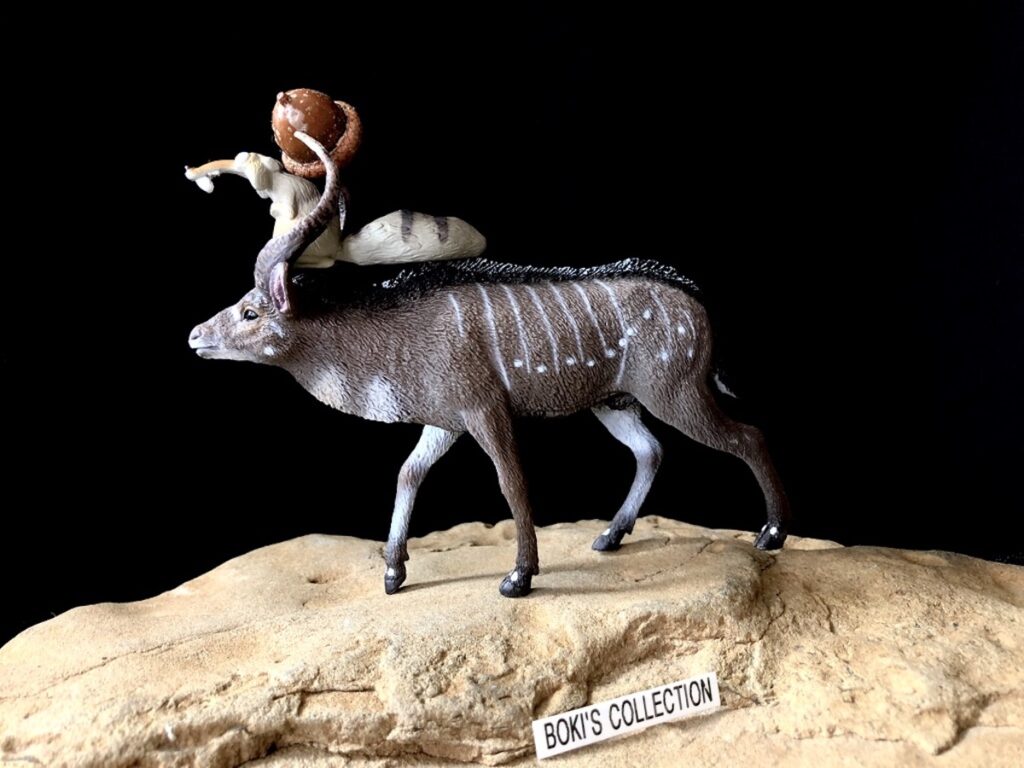
Well, that’s our review for today. I hope that you enjoyed reading it. Until the next one, stay safe and healthy, cheers!
Disclaimer: links to Ebay and Amazon on the AnimalToyBlog are affiliate links, so we make a small commission if you use them. Thanks for supporting us!



